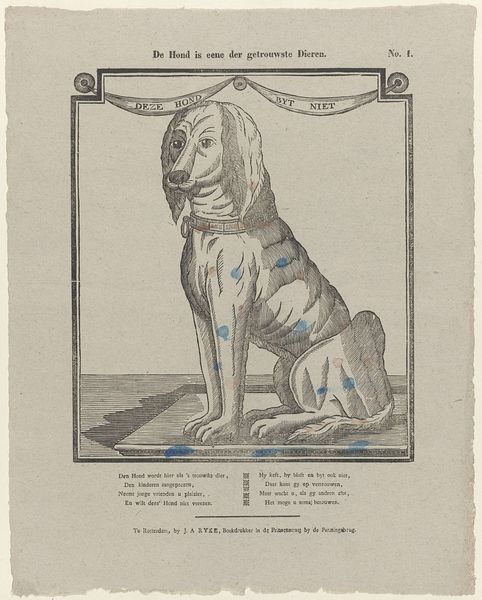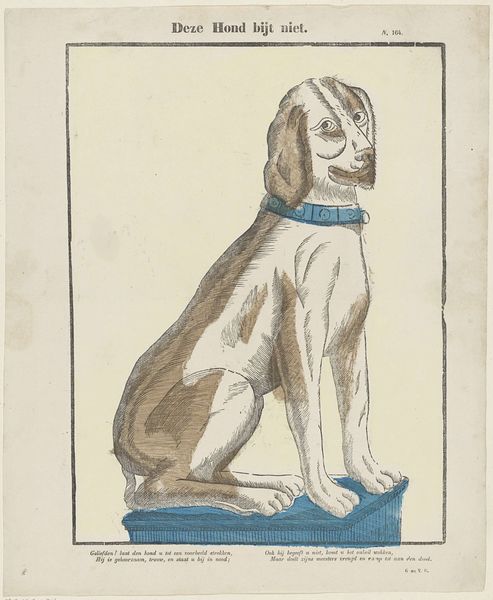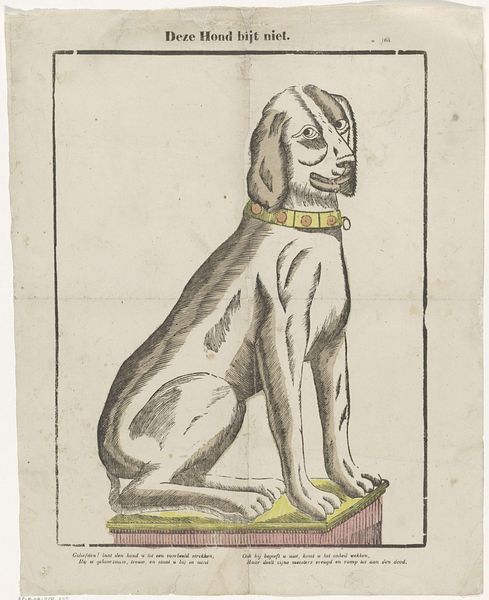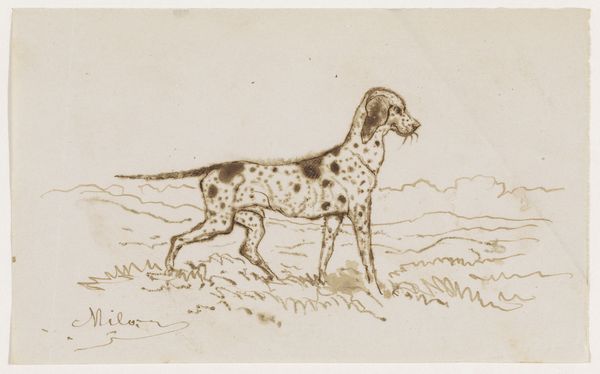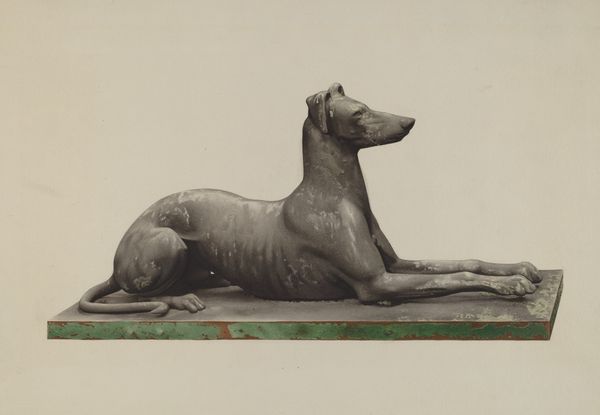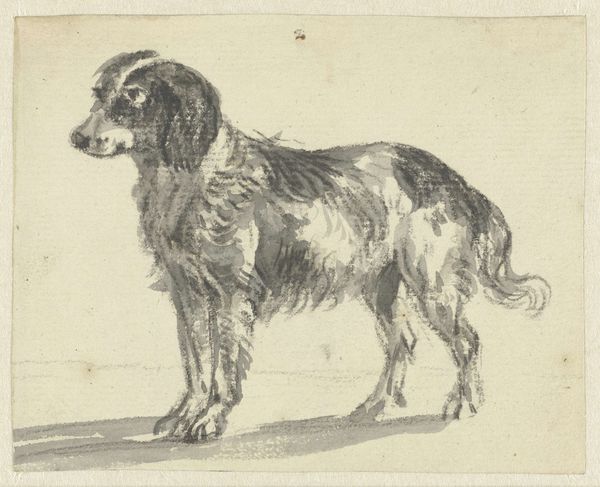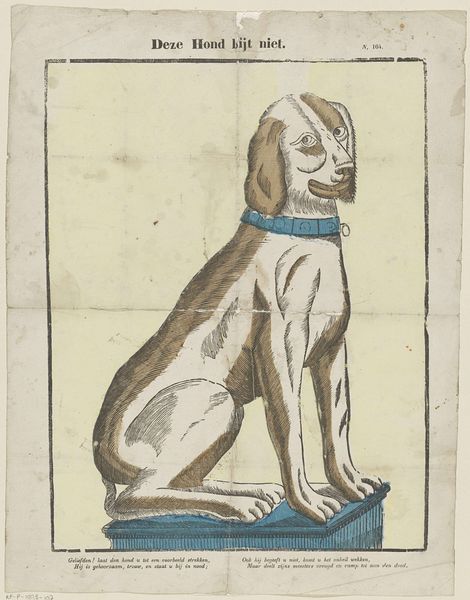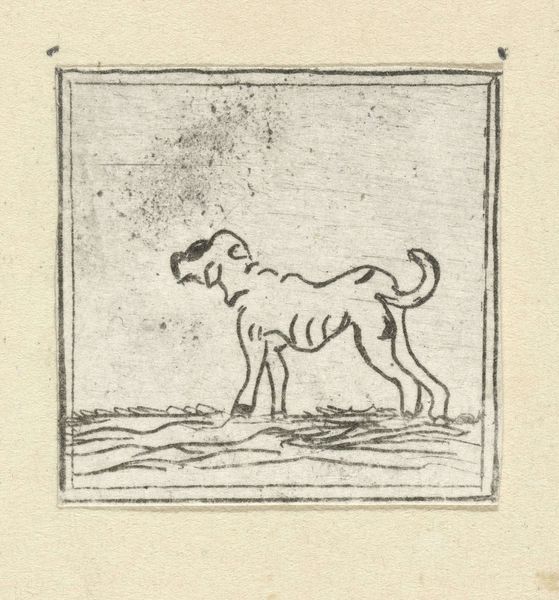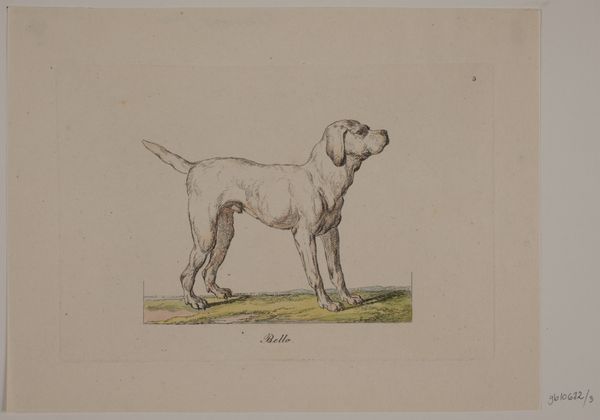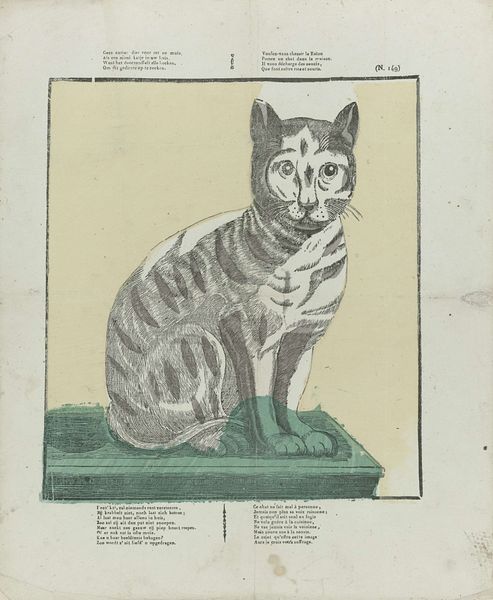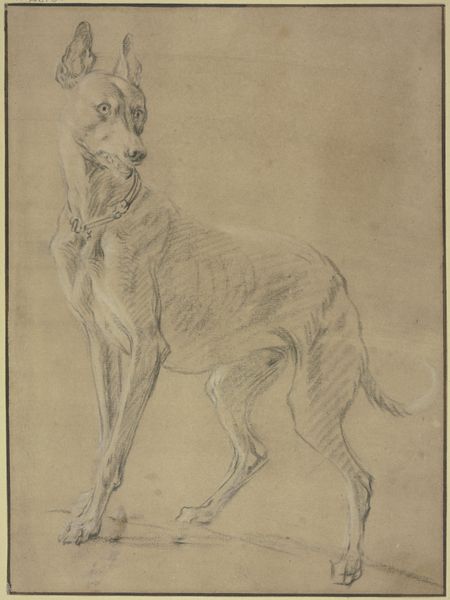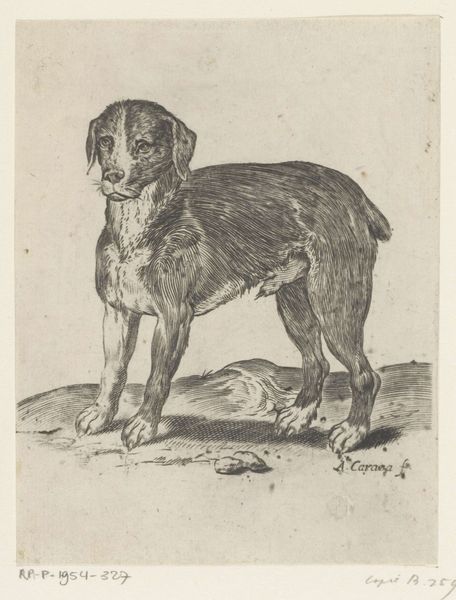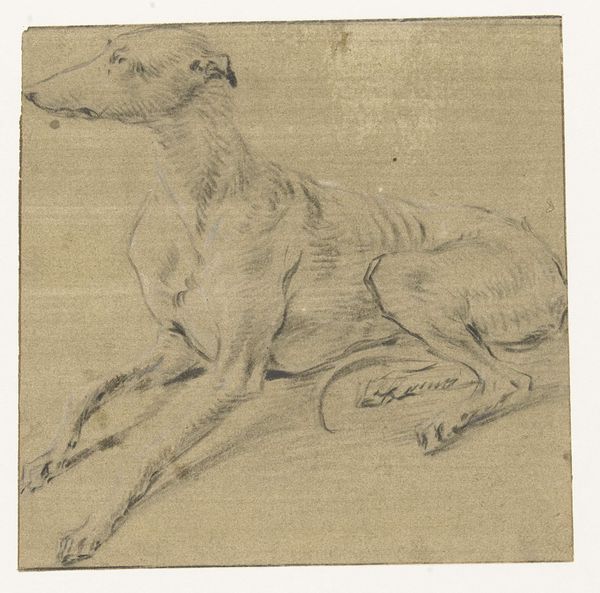![Ziet hoe dit hondje zittend wacht, / En op den wenk zijns meesters acht [(...)] by Philippus Jacobus Brepols](/_next/image?url=https%3A%2F%2Fd2w8kbdekdi1gv.cloudfront.net%2FeyJidWNrZXQiOiAiYXJ0ZXJhLWltYWdlcy1idWNrZXQiLCAia2V5IjogImFydHdvcmtzL2IxYTYxN2NlLTJlMDYtNDZjOC1iN2JhLTI1MzIzZjBiOGJlMy9iMWE2MTdjZS0yZTA2LTQ2YzgtYjdiYS0yNTMyM2YwYjhiZTNfZnVsbC5qcGciLCAiZWRpdHMiOiB7InJlc2l6ZSI6IHsid2lkdGgiOiAxOTIwLCAiaGVpZ2h0IjogMTkyMCwgImZpdCI6ICJpbnNpZGUifX19&w=3840&q=75)
Ziet hoe dit hondje zittend wacht, / En op den wenk zijns meesters acht [(...)] 1800 - 1833
0:00
0:00
drawing, paper, watercolor, pen
#
drawing
#
paper
#
watercolor
#
pen
#
watercolour illustration
#
genre-painting
Dimensions: height 416 mm, width 340 mm
Copyright: Rijks Museum: Open Domain
Curator: Here we have a drawing, dating from the period 1800 to 1833, by Philippus Jacobus Brepols. The work combines pen, watercolor, and ink on paper, and is titled "Ziet hoe dit hondje zittend wacht, / En op den wenk zijns meesters acht." It depicts a seated Dalmatian dog. What are your first thoughts? Editor: It has a rather melancholic feel. The muted colours, particularly the teal background, lend a sense of quiet contemplation. And the dog itself looks so stoic, patiently waiting... almost like a furry, spotted statue. Curator: It’s interesting you say statue because there’s an element of constructed artifice about it. Notice how the dog is perched on what looks like a plinth. The overall impression to me isn't so much melancholy, but more about the human control and expectations placed upon animals. The accompanying text—verses of a poem in Dutch and French, are about a dog who obeys their masters. It implies the social status of having such trained animal. Editor: I see what you mean! Framing it within historical context is illuminating. The relationship between humans and animals is really exposed. Look at that stiff collar—it constricts freedom! The work speaks about the politics and constraints inherent in pet ownership, or rather pet servitude. Curator: Indeed, this drawing is categorized as genre painting, a term often used for scenes of everyday life but here the artwork goes deeper into human society’s reflection via genre illustration, making a clear political stance against power imbalance. The verses inscribed alongside only enhance this sentiment. Editor: Looking closer, even the dog's spots feel deliberate and placed—it adds to this strange unreality. What is fascinating here, despite the static representation and overall message, is Brepol’s artistry and precision with humble medium such as ink and watercolour, conveying complex commentaries. Curator: Absolutely. It’s a window into the societal frameworks of the time, even if the surface seems like simple genre. Editor: Exactly, turning simple to multilayered social commentary! I’m grateful for your perspectives. Curator: Likewise. It's wonderful to revisit the period.
Comments
No comments
Be the first to comment and join the conversation on the ultimate creative platform.
